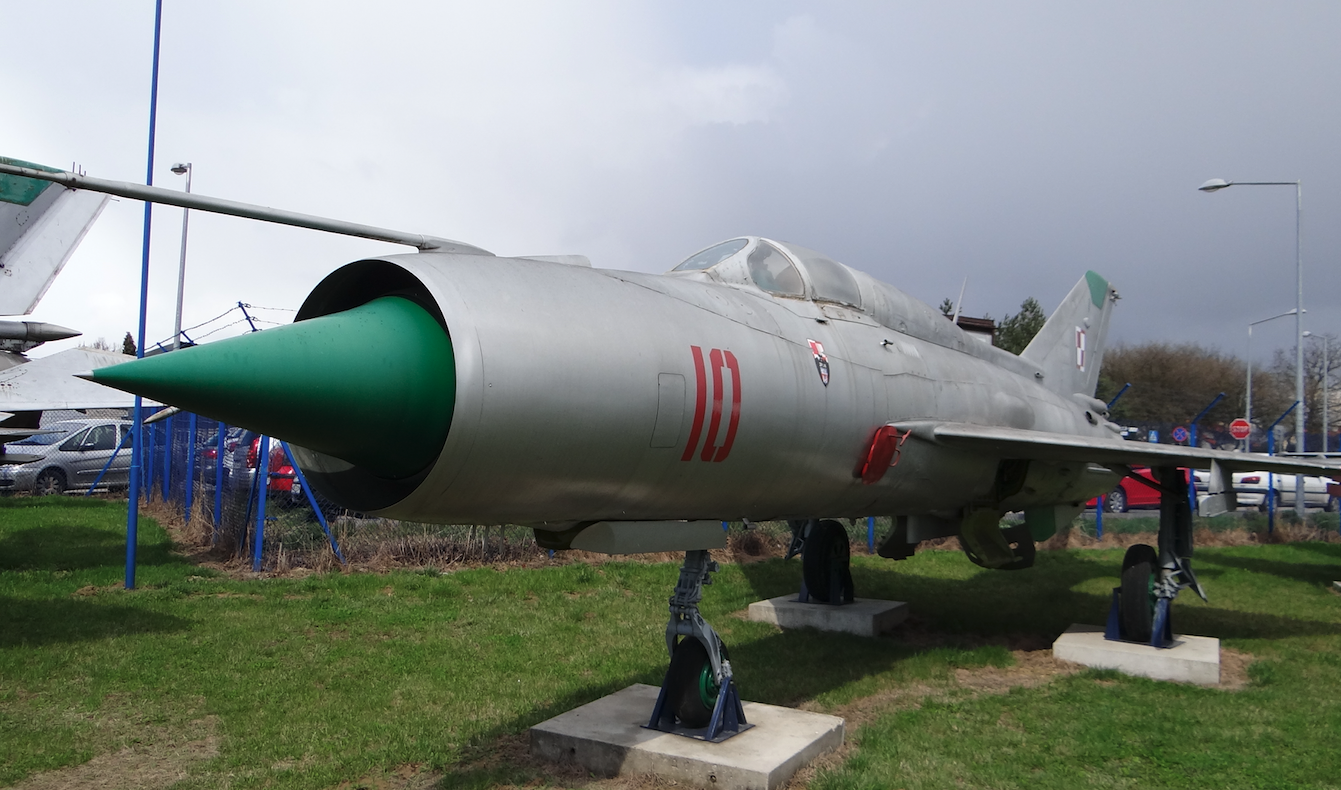Szczecin 2007-11-22
4th Fighter Aviation Regiment in Goleniów,
and then
2nd Fighter Aviation Regiment “Kraków” in Goleniów.
1944 – 1993
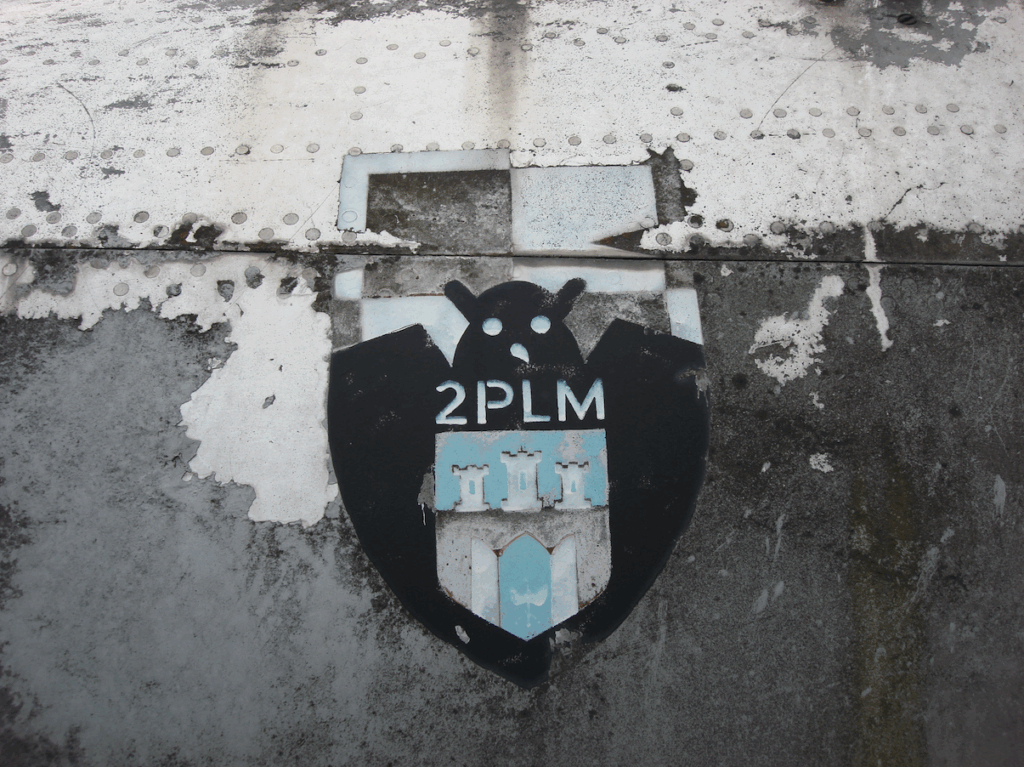
The creation of the 2nd Night Bomber Regiment. 1944.
The history of the 2nd Night Bomber Regiment begins in the same way as the 1st Night Bomber Regiment Warsaw. On April 1, 1944, in the CCCP, in the town of Grigoryevskoye, the 2nd Night Bomber Regiment “Krakow” was created. This was based on Order No. 001 of the commander of the 1st Polish Army in the CCCP, Brigadier General Zygmunt Berling, on the establishment of the Polish Air Force. It was the second Polish air unit created in the East after the 1st Night Bomber Regiment “Warsaw”. The regiment was created on the basis of soldiers from the 3rd Infantry Division named after Romuald Traugutt.
On August 30, 1944, the 2nd PNB “Krakow”, together with the 1st PLM “Warsaw” and the 3rd Assault Aviation Regiment, which was 100% Soviet, formed the 4th Pomeranian Mixed Air Division. On October 31, 1944, the Polish Army Aviation Command was established, headed by Soviet General Viktor Połonin.
The main purpose of the 2nd PNB “Krakow” was to organize and train Polish air units. The regiment was divided into three squadrons. In mid-1944, the regiment had 35 pilots, 34 navigators, and 85 ground crew. The only type of aircraft the unit was equipped with was the Polikarpov Po-2 biplane, popularly known as the Kukuryźnik.
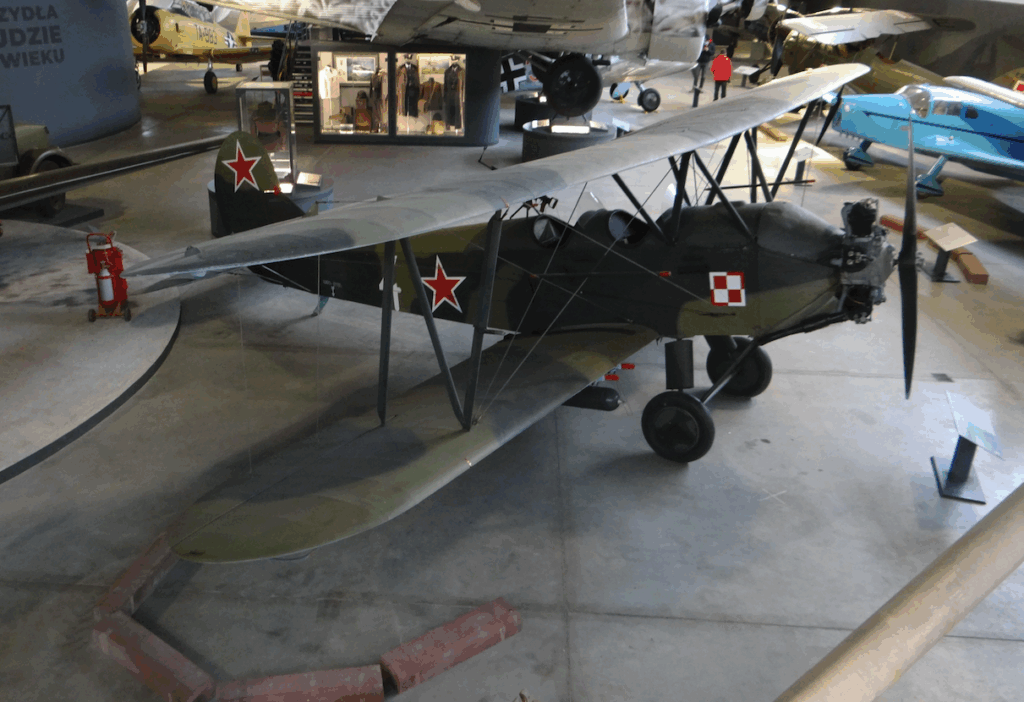
The first commander of the unit was Colonel Pilot Józef Smaga. However, in June 1944, Major Pilot Siemion Worobiow became the commander. On August 12, 1944, the 2nd PNB was relocated to a field airport near Wola Rawska close to the front. This is how the Regiment began its combat trail. In the 2nd PNB, initially, the pilots were only Muscovites. Poles were usually only deck gunners. Gradually, as the new cadre of pilots was trained, the Muscovites were replaced by Polish pilots.
The camouflage of all the aircraft of the Polish People’s Aviation was identical to that of Soviet aircraft. From the very beginning of the aviation’s existence, Polish identification markings were painted on the aircraft; checkerboards. This applied to both Polish and Soviet pilots’ aircraft (in the 3rd Assault Aviation Regiment). This was due to a military agreement between the commands of both armies. As was the case in England, the checkerboards were small and placed at the front of the aircraft, near the engine. However, they were slightly larger than those used in England (the side of the checkerboard was 300-350 mm). The role of the actual identification marks was played by Soviet stars. As can be seen from the photos, the stars were painted in three ways: a star without a border, a star with a thick white border, a star with a thick white border and a thin black border. The way the propeller spinners were painted was also characteristic – 1. PLM had them in yellow, 2. PNB – blue, and 3. PLSz – white. The Soviet recognition stars disappeared after the war, on July 11, 1945, when General Viktor Polynin issued an order to repaint the stars into checkerboards. This was to be done by July 20, 1945.
Military operations.
The regiment began military operations on September 11, 1944, taking part in the bombing of the 19th Germanic armored division. The regiment’s pilots provided minor assistance to the Warsaw insurgents, dropping equipment, ammunition, and food. At that time, the regiment operated in the area of Czerniaków, Żerań, Błonice, and other towns near Warsaw. The regiment’s operations included conducting reconnaissance flights, participating in the fights to liberate Warsaw in January 1945. The regiment also participated in the fights on the Pomeranian Wall, as well as in the fights for Berlin.
During 8 months of participation in combat, the regiment performed 2,121 flights. 1/3 of the total number of flights were operations in the Warsaw area. The results of the regiment’s operations (over 38 nights) include 266 destroyed guns and mortars, 2,387 cars, 8 railway cars, 7 anti-aircraft searchlights. The regiment’s strikes caused: 111 fires, destroyed about 300 buildings, caused 43 explosions of fuel and ammunition depots and eliminated about 1,200 enemy soldiers from combat. The regiment suffered no casualties. Only 5 aircraft were destroyed. On the very day the war ended, on May 8, 1945, the regiment received an order to return to Poland. It was relocated to the airport in Bydgoszcz, where it was stationed from 1945 to 1957.
Airports where the 2nd PNB was based during World War II: Grigorievskoye – from April 1, 1944 to June 3, 1944. Gostomel – from 4.06.1944 to 16.08.1944. Dys – from 17.08.1944 to 18.08.1944. Wola Rawska – from 17.08.1944 to 12.01.1945. Radzymin – from 13.01.1945 to 23.01.1945. Gaj – from 24.01.1945 to 8.02.1945. Bydgoszcz – from 9.02.1945 to 11.03.1945. Mirosławiec – from 10.03.1945 to 14.04.1945. Barnówko – from 13.04.1945. to 21.04.1945. Heckelberg – from 20.04.1945 to 1.05.1945. Möthlow – from 1.05.1945 to the end of the war.
Commanders of the 2nd PNB “Kraków”, during World War II: Lt. Col. Józef Smaga – from 1.04.1944 to 1.08.1944. Major Siemion Worobiow – from 2.08.1944 to the end of the war (?).
Peace period 1945-1946 2nd Airborne Division “Krakow”.
At the end of World War II, all Polish units were ordered to return to Poland. On May 10, 1945, the 2nd PNB began service at the Bydgoszcz airport. Many units were disbanded, but the 2nd PNB remained. However, it was completely re-equipped with attack aircraft. The nature of the tasks performed changed and, of course, the name was changed to 2nd Airborne Division “Krakow” (Airborne Assault Regiment). This was done by Order of September 1, 1945. For its participation in the war against Germanic troops, the 2nd Airborne Division “Krakow”, stationed in Bydgoszcz, was awarded the Order of Virtuti Militari, Class V.
The second half of the 40 years was characterized by Poland’s attempt to create such an air force that would meet the requirements of peacetime. It was planned to create three fighter regiments, three fighter-assault regiments and one bomber regiment. On January 24, 1946, by the Order of the Supreme Commander of the Polish Army, new units were created, others were liquidated and the rest were reformed. By this Order, the 2nd Assault Aviation Division was established with the following members: 4. PLSz (previously 2. PLSz “Kraków”), 5. PLSz (previously 3. PLSz), 6. PLSz, 7. PBN (Night Bomber Regiment). This division was part of the Polish Army Aviation. On September 1, 1946, the 4th PLSz in Bydgoszcz received a banner funded by the Bydgoszcz community.
However, the second half of the 40 years was a very difficult period for the Polish Nation. Society was under increasingly strong Soviet domination. Many of our compatriots could not return to the country, and those who did return were harassed, often imprisoned and often sentenced to death for alleged espionage for the West. This fate did not spare Polish pilots fighting in the West in World War II. Soviet officers ruled in Polish commands, and communists of Polish descent were equal to them. There were also purges, i.e. the removal of inconvenient soldiers. Examples can be multiplied. When it comes to flying equipment, the situation looked bad. Aircraft that had taken part in the war were still being used. New aircraft did not appear until February 1949, in the form of outdated designs such as the Ilyushin Il-10. What is worse, there was no view of modern equipment, because Soviet design offices did not conduct any work on a modern attack aircraft.

By Order of 28 December 1953, the 4th PLSz received its own name “Kraków” again, after a six-year break. Only this regiment and the 1st PLM were honored to receive a distinctive name.
Goleniów Airport.
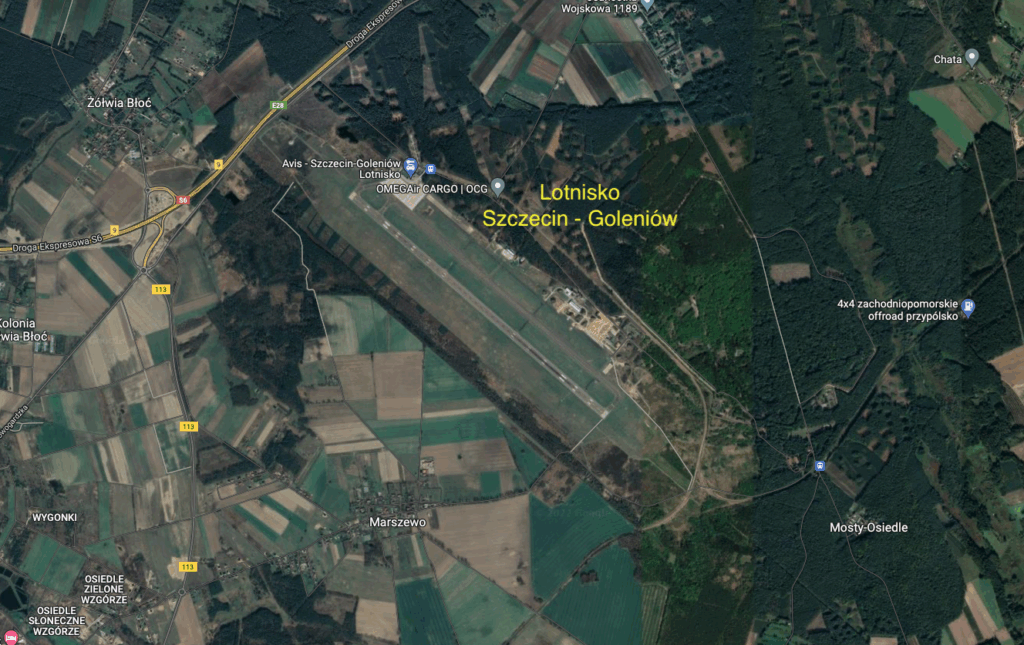
The airport near Szczecin is called Goleniów-Glewice, and currently Szczecin Airport. Geographical location 53.35 N 14.54 E. Elevation 47 m. The airport is located about 4 km east of the city of Goleniów, on national road No. 6. The airport was equipped with one runway (RWY) measuring 2,500 m x 60 m. Runway orientation 13/31. RWY has a concrete and asphalt surface. In the period 1957-1993, the airport was used as a military airport and occasionally a civilian airport. Since 1993, the airport has been only a civilian airport, used for passenger traffic, cargo and for medical aviation. The officer housing estate was located in the nearby town of Maszewo.
4th PLSz “Kraków” moved to Goleniów. 1957.
In 1957, the 4th PLSz was relocated from Bydgoszcz to the airport in Goleniów, where it was stationed until its disbandment in 1993. In 1957, the 4th PLSz received Polish-made Lim-1/2 aircraft. The introduction of these machines into the armament caused major changes in the regiment. Training on turbojet aircraft began. The new equipment also allowed for fighter missions, so the regiment became a fighter-attack regiment, the 4th PLM-Sz “Kraków”. In the spring of 1960, the regiment received its first Lim-5 fighters.
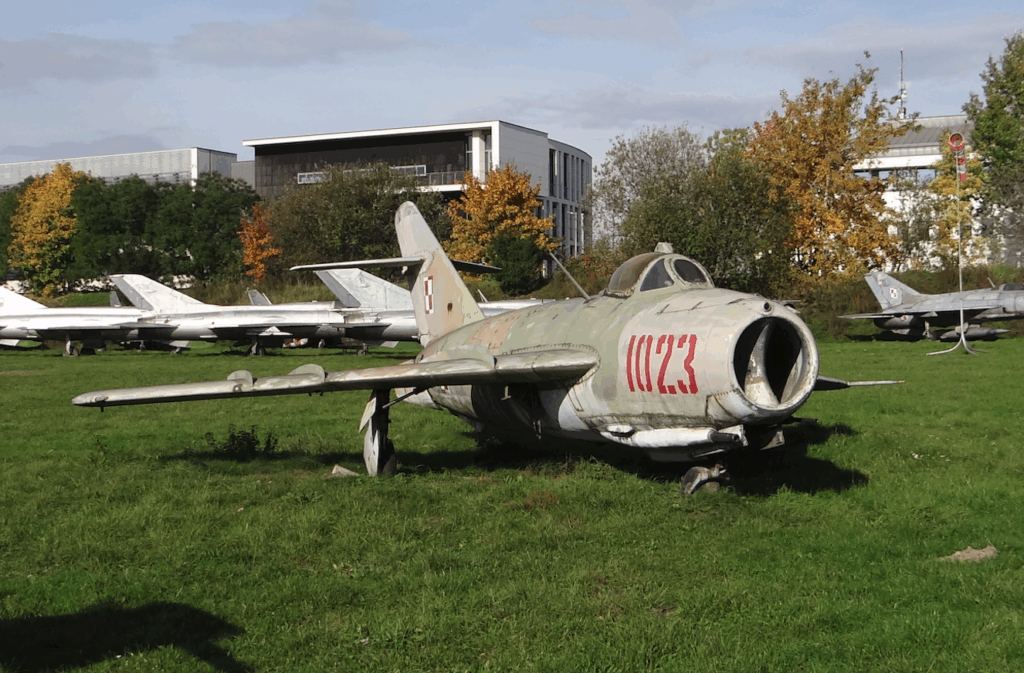
In 1960, the 4th PLM-Sz from Goleniów was directly subordinate to the 8th Fighter-Bomber Aviation Division in Bydgoszcz. In addition to the 4th PLM-Sz, this division included the following regiments: the 5th PLM-Sz in Bydgoszcz and the 48th PLM-Sz in Inowrocław. In turn, the 8th DLM-Sz was subordinate to the Operational Aviation Command based in Poznań.
4th PLM “Kraków”. 1963.
In 1963, the regiment underwent further changes. Since the unit was designated as a regiment, it was re-equipped with supersonic MiG-21 fighters and became the Fighter Aviation Regiment. Then, there were further organizational changes. The regiment was separated from the structures of the 8th DLM-Sz, and was subordinated to the 5th BDLM (Brandenburg Fighter Aviation Division) in Świdwin. This division had two fighter regiments in its composition, the 4th PLM and the 40th PLM. Since 1964, the Regiment began intensive training of pilots and technical personnel for MiG-21 aircraft. Official training began on April 1, 1965. The Regiment became a forerunner in the use of DOL (airport road sections) for MiG-21 aircraft. The first pilot to land and take off a MiG-21 on the DOL road was captain pilot Zbigniew Biedrzycki. Around 1967, the basic type of aircraft in the regiment was of course the MiG-21 aircraft: in the PF (about 5 units) and PFM (about 12 units) versions. But the regiment still had Polish Lim-2/5 planes (about 15 units).
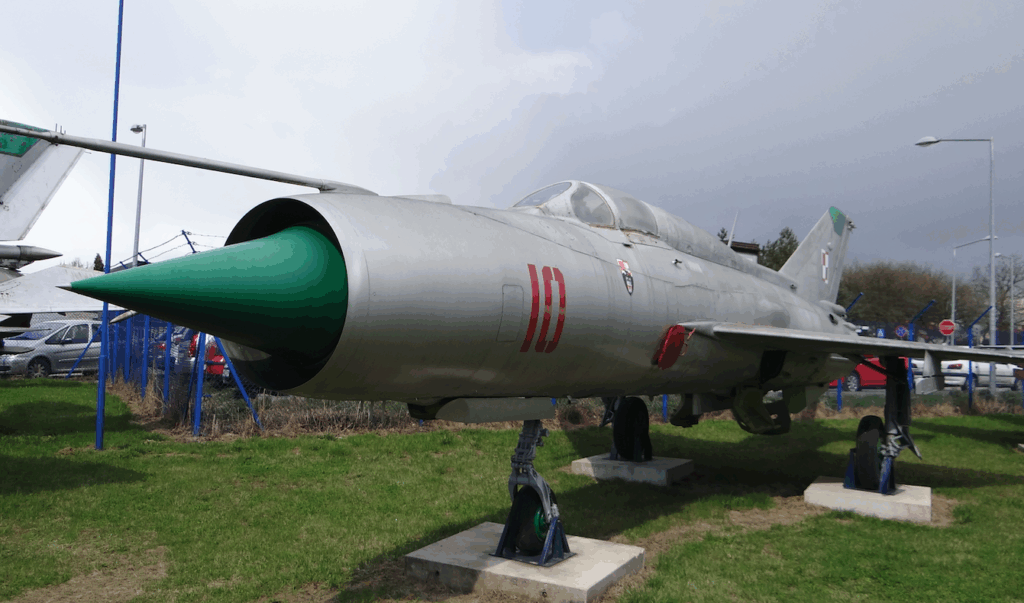
Photo description: This MiG-21 nb 10 aircraft was used in the 4th PLM. The fuselage has the emblem of the 4th PLM.
2nd PLM “Kraków”. 1967.
In 1967, there was a correction in the organization of Operational Aviation. The 4th PLM received a new number and its own name, the 2nd PLM “Kraków”. This was based on Order No. 07/MON of the Minister of National Defense of May 4, 1967, on the transfer of historical names and numbers of front units to military units and the establishment of annual unit holidays. The 2nd PLM took over the traditions of the disbanded 2nd PLM in Kraków-Czyżyny.
In 1971, the 5th Brandenburg Fighter Aviation Division was renamed the 3rd Brandenburg Assault-Reconnaissance Division. This was done on the basis of the order of the Chief of General Staff No. 012/Org of 6 March 1971. At the same time, the Chief of Staff of the Air Force No. 03 of 27 March 1971, changed the regiments’ subordination. Therefore, the 3rd BDLSz-R received the 8th PLSz from Mirosławiec, the 32nd PLRTiA from Sochaczew. The 40th PLM remained, renamed the 40th PLSz and re-equipped with attack aircraft. The 2nd PLM from Goleniów left the structures of the 3rd BDLSz-R and from then on directly reports to Poznań. This organization of the regiment lasted the longest, until 1990.
The social and political changes in Poland in 1989 also had to lead to changes in the Polish Air Force. Based on the Order of the Ministry of National Defense of July 1, 1990, the Air Force, previously known as the Operational Aviation, was merged with the Air Defense Forces of the Country. In this way, the Air and Air Defense Forces were created. In this situation, the 2nd Air Defense Corps “Kraków” was transferred to the 2nd Air Defense Corps, with the Staff and Command in Bydgoszcz. At that time, the regiment had 24 MiG-21 M / MF aircraft and 5 MiG-21 UM aircraft.
By the order of the commander of the Air and Air Defense Forces No. 90 of September 23, 1993, and the order of the commander of the 2nd KOP No. 46 of October 12, 1993, the 2nd Air Defense Corps “Kraków” was disbanded on December 31, 1993. On 10 January 1994, the last assembly of the regiment took place. The aircraft in its possession were transferred to other air regiments, including the 1st PLM “Warszawa”. The last machines flew from the Goleniów airport in September 1993.
On the 10th anniversary of the departure of the last fighters from the regiment in Goleniów, a meeting of former professional personnel was organised and a commemorative plaque was unveiled on the wall of the newly built airport. Throughout its entire period of activity, the regiment was one of the leading units of the Polish Air Force. He was awarded (as early as 1945) the Cross of the Order of Virtuti Militari, Class V, and the Commander’s Cross of the Order of Polonia Restituta (in 1975). Honorary mementos and badges that the Regiment received include: the Pomeranian Griffin, the Golden Badge “For social work for Kraków”, “For services to the Aeroclub”, “Meritorious for aviation”, Honorary Badge of the 1st degree for services to PLL “LOT”.
For several years, in Goleniów, in the historic Wolin Gate, in addition to the Tourist Information Point and the City History Room, there was also the Memorial Room of the 2nd PLM “Kraków”. It was here, after the regiment was disbanded, that some of the exhibits that were located in the Tradition Room of the 2nd PLM on the premises of the unit were moved. Here you could see commemorative books, albums with hundreds of photos, clippings from magazines about the regiment, its achievements and people, commemorative cups, airplane models and several pieces of equipment and furnishings. The Hall of Remembrance functioned thanks to the kindness of the city authorities and the care of the people working here. However, the hall was closed down and the exhibits were moved. (We do not have information where?) What remained is included in several photos of Mr. Janusz Klus, which we found on the Internet a dozen or so years ago. There is no longer any information on the Hall of Remembrance of the 2nd PLM Kraków on the Internet.
Lim-2 nb 1967. In 1967, in Goleniów, a PZL Lim-2 aircraft was placed on a pedestal in front of the Garrison Officers’ Club, on which a fictitious side number 1967 was placed, which is the date. The aircraft was moved several times. The final location was the intersection of Szkolna and Jagiełły streets. When the 2nd PLM was disbanded, the city was not interested in symbolic cosmetics and necessary repairs. The aircraft was saved from scrapping by the decision to move the exhibit to the 22nd Air Base in Malbork. On July 20, 2006, the aircraft was removed from its pedestal and transported to Malbork. The unit command in Malbork agreed to take over the aircraft, which after renovation was placed as a monument on the base.
MiG-21 UM nb 9353. 2008. In 2008, in Goleniów, in front of the city hall, a MiG-21 UM nb 9353 / no. 516999353 was placed on a pedestal. The aircraft was delivered to Poland in 1981. It ended its service in Łask 10th ELT in 2003. In 2015, the aircraft was renovated.
Disasters, accidents and breakdowns in the MiG-21 Regiment in Goleniów.
1 On March 8, 1967, a MiG-21 F-13 from 4 PLM Goleniów crashed. Pilot Lieutenant Paweł Kacprzak died. Near Wierzchosław.
2 On August 24, 1973, a MiG-21 F-13 from 2 PLM crashed over Wolin Island. Pilot Lieutenant Jan Turowski died. The cause of the crash was not determined. At the time, bad weather conditions prevailed.
3 On December 12, 1980, a MiG-21 PFM from 2 PLM Goleniów crashed near Wierzchosław. Pilot Lieutenant Colonel Henryk Halka died. Lieutenant Colonel Henryk Halka was the commander of the Regiment. He was a candidate for Polish cosmonaut in a group of four people. He died shortly after take-off from Goleniów Airport in DTWA. The cause of the crash was not clearly established.
4 On May 12, 1983, a MiG-21 PFM from 2 PLM crashed at Goleniów Airport. Pilot Lieutenant Wiesław Kalicki ejected at an altitude of 3,900 m.
5 On September 1, 1983, a MiG-21 PFM from 2 PLM crashed over the Nadarzyce training ground. Pilot Captain Roman Jóźwik survived.
6 On December 2, 1983, a MiG-21 MF from 4 PLM crashed near Rychowa. Lieutenant Eugeniusz Wojciechowski. Pilot’s fate unknown.
Written by Karol Placha Hetman

